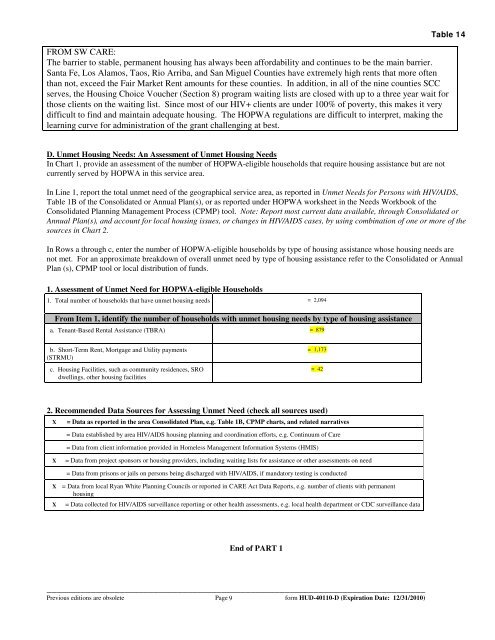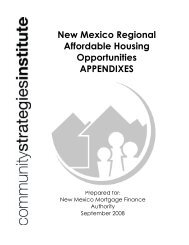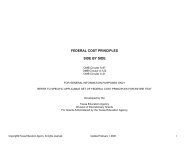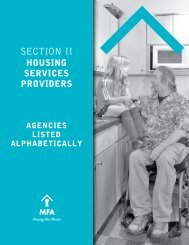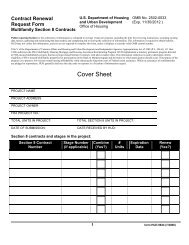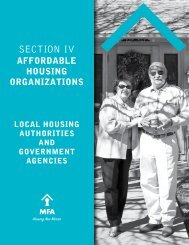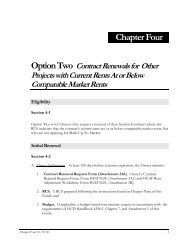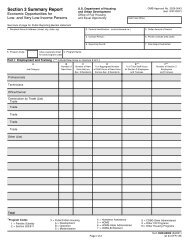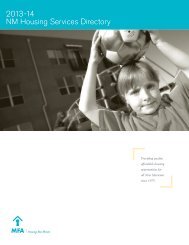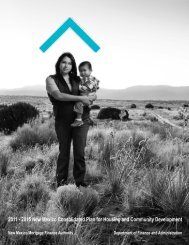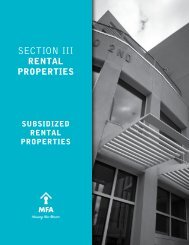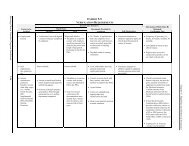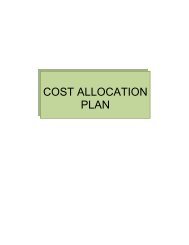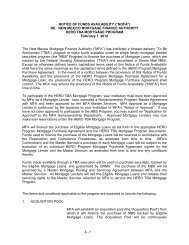- Page 1 and 2:
Table 18 HUD IDIS PR06 Report as of
- Page 3 and 4:
IDIS - C04PR06 U.S. DEPARTMENT OF H
- Page 5 and 6:
IDIS - C04PR06 U.S. DEPARTMENT OF H
- Page 7 and 8:
IDIS - C04PR06 U.S. DEPARTMENT OF H
- Page 9 and 10:
IDIS - C04PR06 U.S. DEPARTMENT OF H
- Page 11 and 12:
IDIS - C04PR06 U.S. DEPARTMENT OF H
- Page 13 and 14:
IDIS - C04PR06 U.S. DEPARTMENT OF H
- Page 15 and 16:
IDIS - C04PR06 U.S. DEPARTMENT OF H
- Page 17 and 18:
IDIS - C04PR06 U.S. DEPARTMENT OF H
- Page 19 and 20:
IDIS - C04PR06 U.S. DEPARTMENT OF H
- Page 21 and 22:
IDIS - C04PR06 U.S. DEPARTMENT OF H
- Page 23 and 24:
IDIS - C04PR06 U.S. DEPARTMENT OF H
- Page 25 and 26:
IDIS - C04PR06 U.S. DEPARTMENT OF H
- Page 27 and 28:
IDIS - C04PR06 U.S. DEPARTMENT OF H
- Page 29 and 30:
IDIS - C04PR06 U.S. DEPARTMENT OF H
- Page 31 and 32:
IDIS - C04PR06 U.S. DEPARTMENT OF H
- Page 33 and 34:
IDIS - C04PR06 U.S. DEPARTMENT OF H
- Page 35 and 36:
IDIS - C04PR06 U.S. DEPARTMENT OF H
- Page 37 and 38:
IDIS - C04PR06 U.S. DEPARTMENT OF H
- Page 39 and 40:
IDIS - C04PR06 U.S. DEPARTMENT OF H
- Page 41 and 42:
IDIS - C04PR06 U.S. DEPARTMENT OF H
- Page 43 and 44:
IDIS - C04PR06 U.S. DEPARTMENT OF H
- Page 45 and 46:
IDIS - C04PR06 U.S. DEPARTMENT OF H
- Page 47 and 48:
IDIS - C04PR06 U.S. DEPARTMENT OF H
- Page 49 and 50:
IDIS - C04PR06 U.S. DEPARTMENT OF H
- Page 51 and 52:
IDIS - C04PR06 U.S. DEPARTMENT OF H
- Page 53 and 54:
IDIS - C04PR06 U.S. DEPARTMENT OF H
- Page 55 and 56:
IDIS - C04PR06 U.S. DEPARTMENT OF H
- Page 57 and 58:
IDIS - C04PR06 U.S. DEPARTMENT OF H
- Page 59 and 60:
IDIS - C04PR06 U.S. DEPARTMENT OF H
- Page 61 and 62:
IDIS - C04PR06 U.S. DEPARTMENT OF H
- Page 63 and 64:
IDIS - C04PR06 U.S. DEPARTMENT OF H
- Page 65 and 66:
IDIS - C04PR06 U.S. DEPARTMENT OF H
- Page 67 and 68:
IDIS - C04PR06 U.S. DEPARTMENT OF H
- Page 69 and 70:
IDIS - C04PR06 U.S. DEPARTMENT OF H
- Page 71 and 72:
IDIS - C04PR06 U.S. DEPARTMENT OF H
- Page 73 and 74:
IDIS - C04PR06 U.S. DEPARTMENT OF H
- Page 75 and 76:
IDIS - C04PR06 U.S. DEPARTMENT OF H
- Page 77 and 78:
IDIS - C04PR06 U.S. DEPARTMENT OF H
- Page 79 and 80:
IDIS - C04PR06 U.S. DEPARTMENT OF H
- Page 81 and 82:
IDIS - C04PR06 U.S. DEPARTMENT OF H
- Page 83 and 84:
IDIS - C04PR06 U.S. DEPARTMENT OF H
- Page 85 and 86:
IDIS - C04PR06 U.S. DEPARTMENT OF H
- Page 87 and 88:
IDIS - C04PR06 U.S. DEPARTMENT OF H
- Page 89 and 90:
IDIS - C04PR06 U.S. DEPARTMENT OF H
- Page 91 and 92:
IDIS - C04PR06 U.S. DEPARTMENT OF H
- Page 93 and 94:
IDIS - C04PR06 U.S. DEPARTMENT OF H
- Page 95 and 96:
IDIS - C04PR06 U.S. DEPARTMENT OF H
- Page 97 and 98:
IDIS - C04PR06 U.S. DEPARTMENT OF H
- Page 99 and 100:
IDIS - C04PR06 U.S. DEPARTMENT OF H
- Page 101 and 102:
IDIS - C04PR06 U.S. DEPARTMENT OF H
- Page 103 and 104:
IDIS - C04PR06 U.S. DEPARTMENT OF H
- Page 105 and 106:
IDIS - C04PR06 U.S. DEPARTMENT OF H
- Page 107 and 108:
IDIS - C04PR06 U.S. DEPARTMENT OF H
- Page 109 and 110:
IDIS - C04PR06 U.S. DEPARTMENT OF H
- Page 111 and 112:
IDIS - C04PR06 U.S. DEPARTMENT OF H
- Page 113 and 114:
IDIS - C04PR06 U.S. DEPARTMENT OF H
- Page 115 and 116:
IDIS - C04PR06 U.S. DEPARTMENT OF H
- Page 117 and 118:
IDIS - C04PR06 U.S. DEPARTMENT OF H
- Page 119 and 120:
IDIS - C04PR06 U.S. DEPARTMENT OF H
- Page 121 and 122:
IDIS - C04PR06 U.S. DEPARTMENT OF H
- Page 123 and 124:
IDIS - C04PR06 U.S. DEPARTMENT OF H
- Page 125 and 126:
IDIS - C04PR06 U.S. DEPARTMENT OF H
- Page 127 and 128:
IDIS - C04PR06 U.S. DEPARTMENT OF H
- Page 129 and 130:
IDIS - C04PR06 U.S. DEPARTMENT OF H
- Page 131 and 132:
IDIS - C04PR06 U.S. DEPARTMENT OF H
- Page 133 and 134:
IDIS - C04PR06 U.S. DEPARTMENT OF H
- Page 135 and 136:
IDIS - C04PR06 U.S. DEPARTMENT OF H
- Page 137 and 138:
IDIS - C04PR06 U.S. DEPARTMENT OF H
- Page 139 and 140:
IDIS - C04PR06 U.S. DEPARTMENT OF H
- Page 141 and 142:
IDIS - C04PR06 U.S. DEPARTMENT OF H
- Page 143 and 144:
IDIS - C04PR06 U.S. DEPARTMENT OF H
- Page 145 and 146:
IDIS - C04PR06 U.S. DEPARTMENT OF H
- Page 147 and 148:
IDIS - C04PR06 U.S. DEPARTMENT OF H
- Page 149 and 150:
IDIS - C04PR06 U.S. DEPARTMENT OF H
- Page 151 and 152:
IDIS - C04PR06 U.S. DEPARTMENT OF H
- Page 153 and 154:
IDIS - C04PR06 U.S. DEPARTMENT OF H
- Page 155 and 156:
IDIS - C04PR06 U.S. DEPARTMENT OF H
- Page 157 and 158:
IDIS - C04PR06 U.S. DEPARTMENT OF H
- Page 159 and 160:
IDIS - C04PR06 U.S. DEPARTMENT OF H
- Page 161 and 162:
IDIS - C04PR06 U.S. DEPARTMENT OF H
- Page 163 and 164:
IDIS - C04PR06 U.S. DEPARTMENT OF H
- Page 165 and 166:
IDIS - C04PR06 U.S. DEPARTMENT OF H
- Page 167 and 168:
IDIS - C04PR06 U.S. DEPARTMENT OF H
- Page 169 and 170:
IDIS - C04PR06 U.S. DEPARTMENT OF H
- Page 171 and 172:
IDIS - C04PR06 U.S. DEPARTMENT OF H
- Page 173 and 174:
IDIS - C04PR06 U.S. DEPARTMENT OF H
- Page 175 and 176:
IDIS - C04PR06 U.S. DEPARTMENT OF H
- Page 177 and 178:
IDIS - C04PR06 U.S. DEPARTMENT OF H
- Page 179 and 180:
IDIS - C04PR06 U.S. DEPARTMENT OF H
- Page 181 and 182:
IDIS - C04PR06 U.S. DEPARTMENT OF H
- Page 183 and 184:
IDIS - C04PR06 U.S. DEPARTMENT OF H
- Page 185 and 186:
IDIS - C04PR06 U.S. DEPARTMENT OF H
- Page 187 and 188:
IDIS - C04PR06 U.S. DEPARTMENT OF H
- Page 189 and 190:
IDIS - C04PR06 U.S. DEPARTMENT OF H
- Page 191 and 192:
IDIS - C04PR06 U.S. DEPARTMENT OF H
- Page 193 and 194:
IDIS - C04PR06 U.S. DEPARTMENT OF H
- Page 195 and 196:
IDIS - C04PR06 U.S. DEPARTMENT OF H
- Page 197 and 198:
IDIS - C04PR06 U.S. DEPARTMENT OF H
- Page 199 and 200:
IDIS - C04PR06 U.S. DEPARTMENT OF H
- Page 201 and 202:
IDIS - C04PR06 U.S. DEPARTMENT OF H
- Page 203 and 204:
IDIS - C04PR06 U.S. DEPARTMENT OF H
- Page 205 and 206:
IDIS - C04PR06 U.S. DEPARTMENT OF H
- Page 207 and 208:
IDIS - C04PR06 U.S. DEPARTMENT OF H
- Page 209 and 210:
IDIS - C04PR06 U.S. DEPARTMENT OF H
- Page 211 and 212:
IDIS - C04PR06 U.S. DEPARTMENT OF H
- Page 213 and 214:
IDIS - C04PR06 U.S. DEPARTMENT OF H
- Page 215 and 216:
IDIS - C04PR06 U.S. DEPARTMENT OF H
- Page 217 and 218:
Table 1 Priorities from Consolidate
- Page 219 and 220:
Total HOME Funds Committed 1/1/08 -
- Page 221 and 222:
3,000,000.00 2,500,000.00 2,000,000
- Page 223 and 224:
Table 3C Bernalillo Chaves Colfax C
- Page 225 and 226:
100% 80% 60% 40% 20% 0% Table 3E-H
- Page 227 and 228:
Table 4 Training and Technical Assi
- Page 229 and 230:
Goal 1 - Finance, produce, and pres
- Page 231 and 232:
Objective 3 - Produce Single Family
- Page 233 and 234:
Objective 5 - Assist 19,000 individ
- Page 235 and 236:
Goal 2 - Manage assets for quality,
- Page 237 and 238:
Objective 3 - Maintain and improve
- Page 239 and 240: Goal 3 - Ensure Profitability and s
- Page 241 and 242: Goal 3 - Ensure Profitability and s
- Page 243 and 244: Goal 4 - Innovate, advocate, create
- Page 245 and 246: Goal 5 - Align strategically and op
- Page 247 and 248: Goal 5 - Align strategically and op
- Page 249 and 250: Goal 5 - Align strategically and op
- Page 251 and 252: Community Development - Annual Moni
- Page 253 and 254: Community Development - Annual Moni
- Page 255 and 256: Community Development - Annual Moni
- Page 257 and 258: Asset Management - Long Term Monito
- Page 259 and 260: Asset Management - Long Term Monito
- Page 261 and 262: Asset Management - Long Term Monito
- Page 263 and 264: Asset Management - Long Term Monito
- Page 265 and 266: Asset Management - Long Term Monito
- Page 267 and 268: HOME - 2008 Lead Based Paint Projec
- Page 269 and 270: HO M E M a tc h R e p o rt U.S . De
- Page 271 and 272: Public reporting burden for this co
- Page 273 and 274: Table 11 ESG MATCH 1/1/2008 - 12/31
- Page 275 and 276: Table 13 2008 Transitional & Suppor
- Page 277 and 278: Transitional and Supportive Service
- Page 279 and 280: Transitional and Supportive Service
- Page 281 and 282: Transitional and Supportive Service
- Page 283 and 284: Table 14 Housing Opportunities for
- Page 285 and 286: Table 14 Project Sponsor Agency Nam
- Page 287 and 288: Table 14 Project Sponsor Agency Nam
- Page 289: Table 14 A. Grantee and Community O
- Page 293 and 294: Table 14 2. Listing of Supportive S
- Page 295 and 296: Table 14 Section 2. Prevention of H
- Page 297 and 298: Table 14 2A. Status of Households A
- Page 299 and 300: Table 14 Permanent Facility-Based H
- Page 301 and 302: Grantee and Community Overview Tabl
- Page 303 and 304: Table 14 gender, socioeconomic stat
- Page 305 and 306: ABQjournal Legals http://legals.abq
- Page 307 and 308: Part IV Minority Owners of Rental P
- Page 309 and 310: Part II: Contracts Awarded 1. Const


